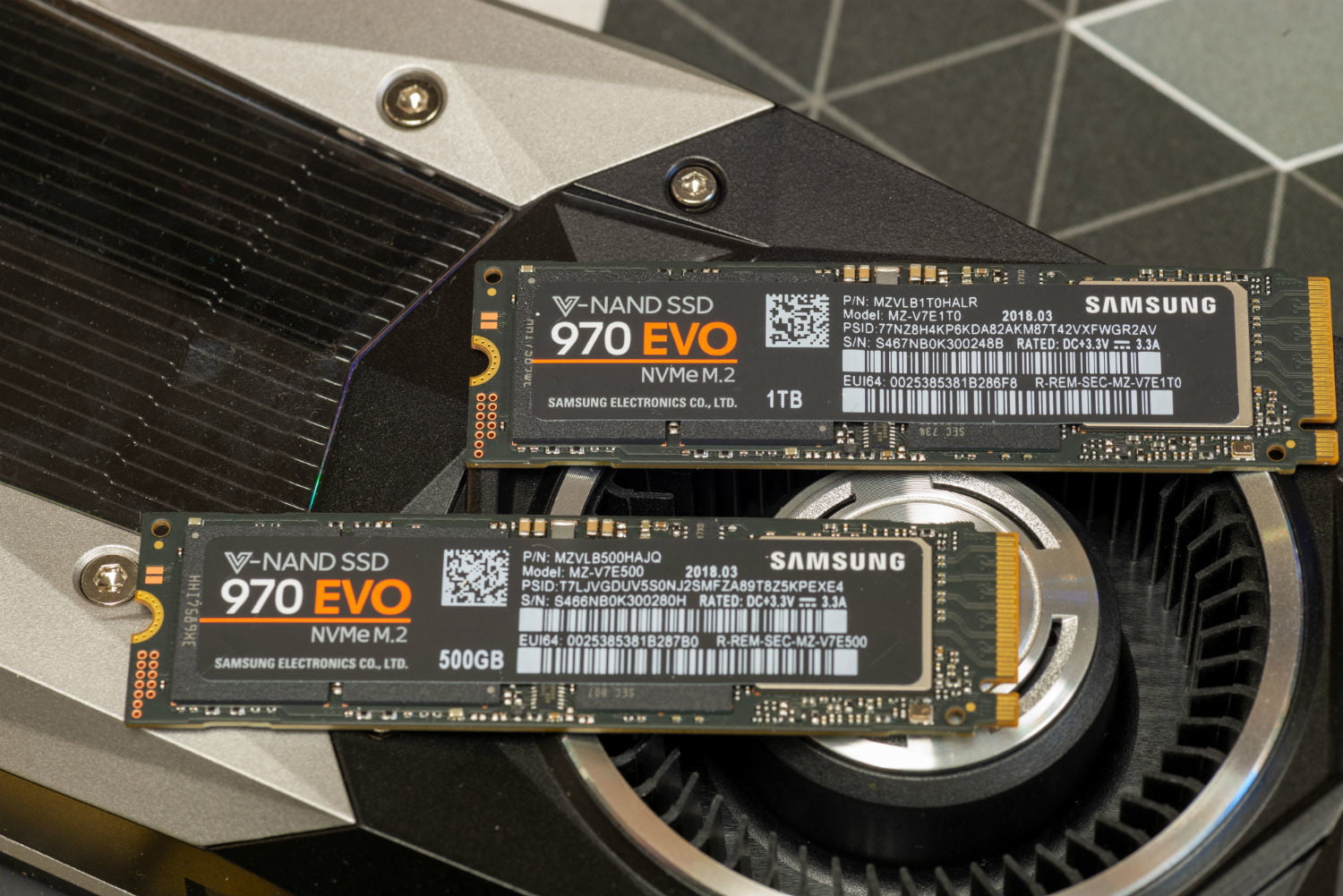
The humble M.2 solid state drive is easy to overlook — after all they’re only about the size of a stick of gum.
M.2 drives typically live on your motherboard somewhere, tucked away on the back or hidden away under all the other hardware in your PC. And it’s a shame, because some M.2 drives — like Samsung’s 970 EVO — deserve a lot more attention than they get.
Spoiled for storage
With all the cloud storage options we have available to us, it’s easy to take storage for granted. Our phones have between 128GB and 256GB of space, while Google, Apple, Microsoft, Dropbox and dozens of other companies offer gigabytes upon gigabytes of cloud storage for free. That’s great for sharing documents, photos, and other files between devices but cloud storage can’t do everything. When you need to store files locally, for gaming, photo/video editing, or just to keep them close at hand, your choice of hard drive or solid state drive matters.
How quickly your computer can serve up those files, move them around, or make them accessible to powerful software suites like Adobe Premiere, can bottleneck your everyday performance and that’s where Samsung’s 970 EVO drives come in.
Quick and quicker

We tested both the 500GB and 1TB models of the 970 EVO, and both drives performed beautifully. Even the massive 1TB model managed to maintain read and write speeds upwards of 2.5 GB/s (gigabytes-per-second). Specifically, the 500GB model hit read speeds of 2,738 MB/s and write speeds of 2,494 MB/s. Meanwhile, the 1TB model hit slightly higher read and write speeds: 2,765 MB/s, and 2,503 MB/s respectively. The differences in speed here are more than likely just the natural variation between SSDs rather than any indication that either drive is truly quicker than the other.
Just look at the kind of speed we saw out of the previous generation Samsung 960 PRO. In the Origin Neuron gaming desktop, the 512GB 960 Pro hit an impressive read speed 2,557 MB/s, and write speed of 1,987 MB/s. It’s important to point out that these are great speeds, but look at how they compare to the 870 EVOs. That’s a huge performance jump in just one generation. To clarify, even a decent mechanical hard drive will only hit a fraction of these speeds. We typically see read and write speeds around 150 MB/s for mechanical drives.
So, it’s impressive that the 1TB model is just as quick as its smaller sibling. That means this tiny stick-of-gum-sized hard drive can offer incredible speed, and massive amounts of storage space without the need for a backup mechanical drive.
That’s good news for a couple reasons. First, because who doesn’t want to slim down the interior of their desktop PC? Second, because it shows that M.2 drives aren’t just for operating system partitions or occasional use. The 970 EVO proves you don’t have to sacrifice speed for storage space. You’ll just have to pay a little extra for it.
Tricky pricing
Samsung’s best SSDs have never been cheap and there’s a reason for that — they’re quick, spacious, powerful, and among the best on the market. We’ve come to expect storage to be cheap because it’s typically disposable — like those free cloud storage accounts we all use. Mechanical hard drives are getting cheaper and cheaper as SSDs slowly start to take their place in the market. Go search any electronics retailer for “1TB hard drive,” and chances are you’ll find one for under $50 bucks. It’s not going to be fast or small (or maybe even reliable), but it’ll be cheap.
Samsung’s 970 EVO SSDs are the opposite: They aren’t cheap, but they are small, quick, and reliable. The 970 EVO lineup starts at $120, for the 250GB model, $230 for the 500GB, $450 for the 1TB model, and $850 for the 2TB model. That’s not exactly cheap, but you get what you pay for here.
The TB 970 EVO will last you a very long time. It’s going to be a couple years at least before we start treating terabytes like gigabytes. Chances are, if you invest in a Samsung 970 EVO SSD, it’s going to be going strong long after your GPU and CPU start to show their age.


